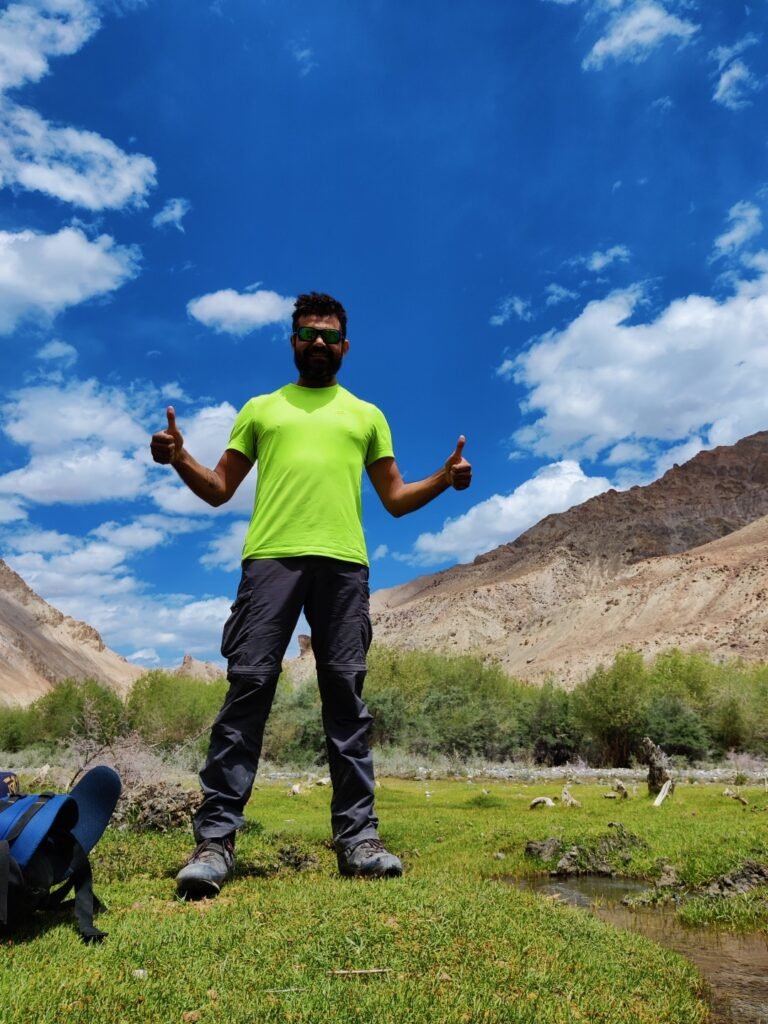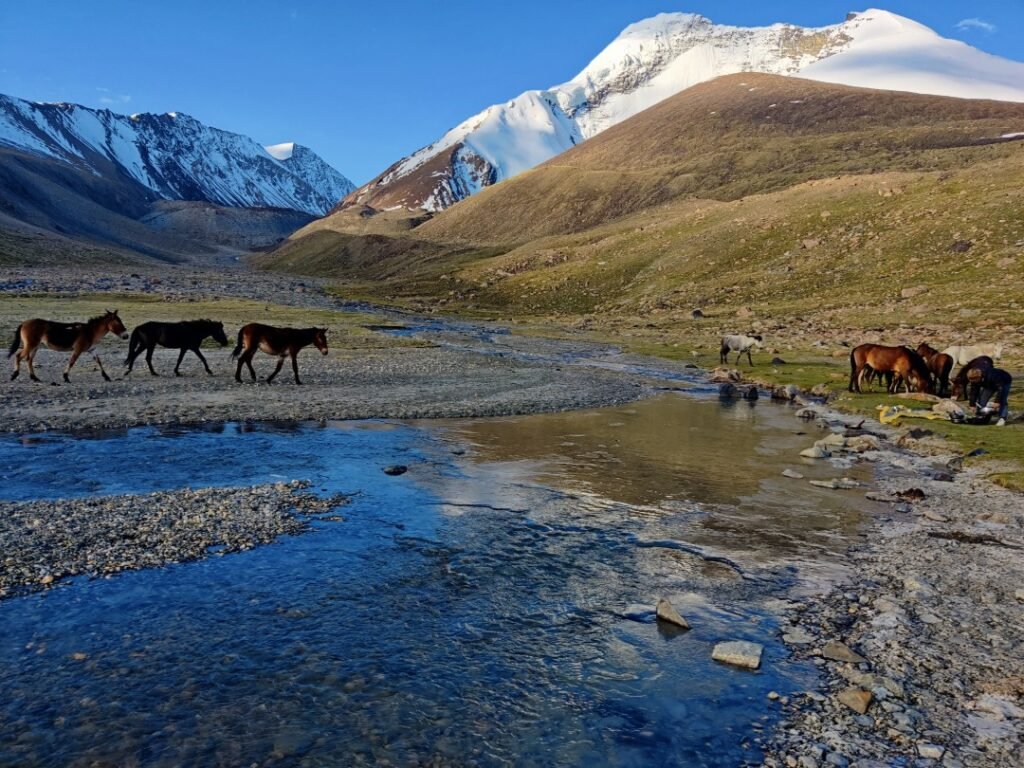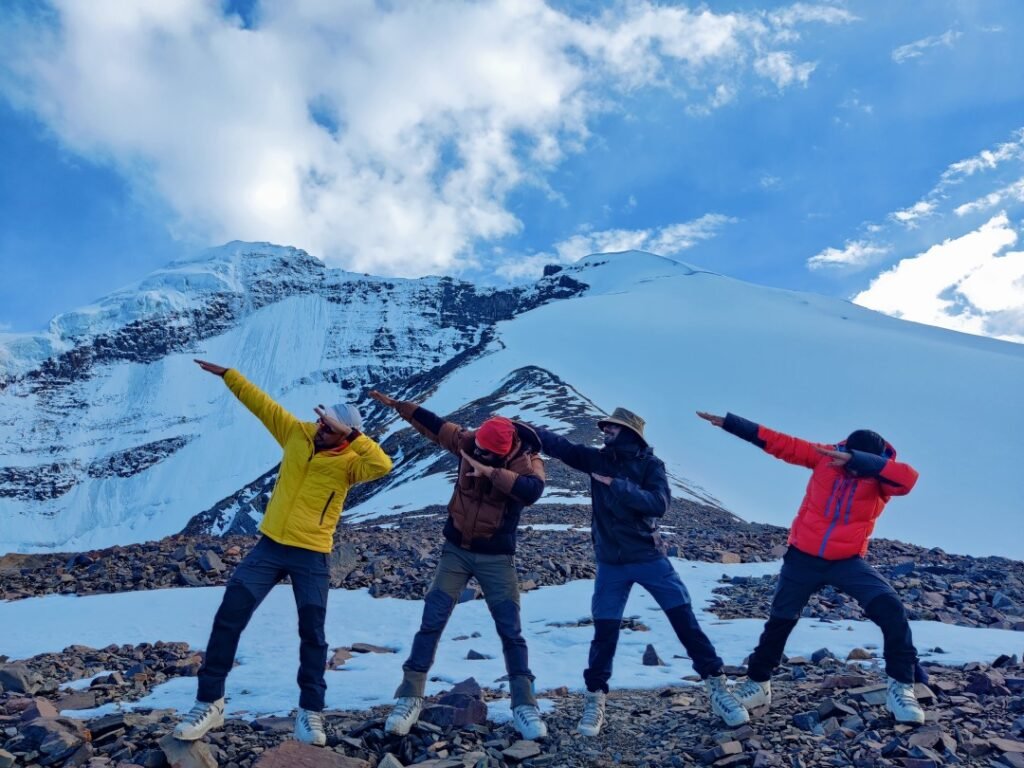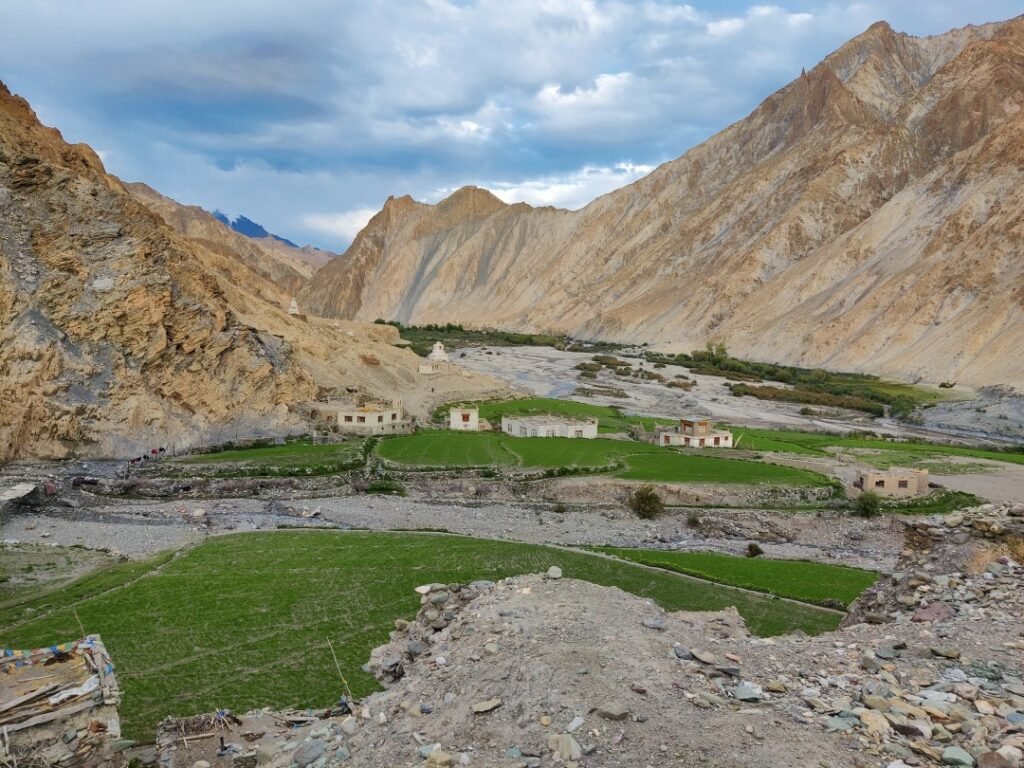Annapurna Base Camp
An epic journey through Nepal’s heartland to the heights of 4,130M.
Talk to an Expert
Trek Difficulty
Moderate
Trek Duration
9 days
Highest Altitude
4,130 meters
Suitable For
Beginners
Accommodation
Sharing
Total Trek Distance
70 km approx
Basecamp
Pokhara
Accomm. Type
Tea House/hotel
Pickup Point
Pokhara Hotel
Accommodation Level
Economical
Annapurna Base Camp Trek
A Journey Through Nepal’s Beautiful Landscapes and Culture
The Annapurna Base Camp Trek is a moderate-level adventure that takes you deep into the Annapurna massif. The route passes through diverse landscapes, from lush rice terraces and rhododendron forests to high-altitude glaciers and rocky terrains.
Trekkers experience spectacular views of Annapurna I, Machhapuchhre (Fishtail), Hiunchuli, and surrounding peaks while being immersed in Nepal’s rich culture, with stops at traditional Gurung and Magar villages.
This trek is perfect for beginners with good fitness, as well as for seasoned trekkers seeking a scenic yet achievable challenge.
Trek Fee
Rs. 35,000 + 5% GST per person
Optional Add-ons
- Travel and Emergency Insurance
Available Dates to Register
- 5 - 16 July
- 26 July - 6 August
Additional Information
Inclusions & Exclusions
Inclusions
- Tea house accommodation with shared rooms.
- All meals from Day 2 lunch to Day 8 breakfast (vegetarian meals with eggs).
- Certified trek leader and support staff.
- Safety gear: ropes, harnesses, carabiners, pulleys.
- Private transport from Pokhara to Kilyu and back from Jhinu Danda.
- Permits: TIMS Card, ACAP (charges apply for foreign nationals).
- First aid kit, altitude sickness medication, oximeters.
- Porter service for backpack offloading (optional).
Exclusions
- Hotel stay in Pokhara (Day 1 & Day 9) not included.
- Meals in Pokhara and during road travel excluded.
- Personal expenses (snacks, drinks, laundry, souvenirs).
- Travel insurance (mandatory for high-altitude trekking).
- Emergency medical rescue and evacuation costs.
- Trekking gear rental (gaiters, microspikes available in Pokhara).
- Customary tips for porters and guides.
- Any additional expenses beyond standard inclusions.
Why is Annapurna Base Camp a Must-Do Trek?
Stunning Himalayan Views
Enjoy spectacular close-up panoramas of Annapurna I, Machhapuchhre (Fishtail Peak), Hiunchuli, and more. The 360° views at base camp are breathtaking.
Unique Cultural Experience
Pass through traditional Gurung and Magar villages, experiencing local hospitality, customs, and architectural beauty. Ghandruk Village, one of the trek’s highlights, offers a cultural museum showcasing Gurung traditions.
Variety of Landscapes
The trek takes you through rice terraces, lush rhododendron forests, bamboo groves, alpine meadows, glacial rivers, and rugged rock formations. Few treks offer such diverse terrain in just a few days.
Natural Hot Springs at Jhinu Danda
After days of trekking, a soak in the Jhinu Danda hot springs offers a refreshing break. These natural thermal baths are a hidden gem where trekkers relax before concluding their journey.
Machhapuchhre (Fishtail Peak)
At 6,993 meters, Machhapuchhre is considered sacred and remains off-limits for summiting. However, its beauty dominates the landscape throughout the trek.

Annapurna Base Camp – 9 Days Detailed Itinerary
Day 1: Arrival in Pokhara
- Altitude: 2,740 ft (835 m)
- Arrive in the scenic lakeside city of Pokhara, a gateway to the Annapurna region.
- Check into your hotel and prepare for the trek ahead.
- Optional exploration: Walk along Phewa Lake, visit the Tal Barahi Temple, or browse local markets for last-minute trekking essentials.
- Team briefing in the evening with trek leaders and fellow trekkers.
Day 2: Drive to Nayapul – Trek to Ghandruk
- Drive Altitude: 3,812 ft (1,162 m) | Trek Altitude: 6,571 ft (2,003 m)
- Drive Duration: 2 hours | Trek Duration: 5–6 hours
- Early morning jeep ride from Pokhara to Nayapul, the trek start point.
- Begin trekking through lush landscapes, passing charming villages and terraced rice fields.
- Cross suspension bridges over the Modi Khola River and ascend towards Ghandruk, a picturesque Gurung village.
- Enjoy stunning views of Machhapuchhre (Fishtail Peak) and Annapurna South.
Day 3: Ghandruk to Lower Sinuwa
- Trek Altitude: 7,414 ft (2,260 m)
- Trek Duration: 6–7 hours
- Pass through dense rhododendron forests, climbing uphill and crossing Kimrong Khola via suspension bridges.
- Steady ascent leads to Chhomrong, the largest Gurung settlement in the region.
- Descend to Chhomrong River, followed by a steep climb to Lower Sinuwa, a small resting point before deeper forest trails.
Day 4: Lower Sinuwa to Deurali
- Trek Altitude: 10,400 ft (3,170 m)
- Trek Duration: 6–7 hours
- Trek through the dense Bamboo and Dovan forests, following the Modi Khola River.
- The terrain becomes rocky as altitude increases, leading to Himalaya Hotel, a common resting point.
- Ascend past towering cliffs and waterfalls to Deurali, where the vegetation thins out, marking entry into alpine terrain.
Day 5: Deurali to Machhapuchhre Base Camp (MBC)
- Trek Altitude: 12,070 ft (3,680 m)
- Trek Duration: 4–5 hours
- Enter an open valley, following a glacial river towards MBC.
- Pass through avalanche-prone sections (guides ensure safe navigation).
- The landscape transforms into snow-clad ridges, offering breathtaking views of Machhapuchhre Peak.
Day 6: MBC to Annapurna Base Camp (ABC) – Descend to Bamboo
- Highest Altitude: 13,451 ft (4,100 m) | Overnight Altitude: 7,582 ft (2,310 m)
- Trek Duration: 6–7 hours
- Early morning hike to Annapurna Base Camp (ABC), witnessing the glorious sunrise over Annapurna I.
- Spend time taking in the majestic 360° Himalayan views at ABC.
- Begin descent back through Deurali, Himalaya, and Bamboo for an overnight stay.
Day 7: Bamboo to Jhinu Danda (Hot Springs)
- Trek Altitude: 5,659 ft (1,725 m)
- Trek Duration: 4–5 hours
- Trek down through lush forests and cross multiple streams.
- Reach Jhinu Danda, famous for its natural hot springs by the river.
- Enjoy a refreshing dip to relax and soothe sore muscles.
Day 8: Jhinu to Nayapul – Drive to Pokhara
- Trek End Altitude: 3,812 ft (1,162 m) | Return to Pokhara: 2,740 ft (835 m)
- Trek Duration: 4 hours | Drive Duration: 2 hours
- Finish the final stretch of the trek along the Modi Khola River trail.
- Arrive at Nayapul, where the jeep ride back to Pokhara awaits.
- Rest, explore, or enjoy a celebratory dinner by Phewa Lake.
Day 9: Depart from Pokhara
- Spend the morning exploring Pokhara’s attractions, such as the Peace Pagoda or Devi’s Falls.
- Depart via flight, bus, or private transport, bidding farewell to the Himalayas.
Say goodbye to the Himalayas. Depart from Pokhara via flight or road, or extend your travels to explore more of Nepal.
Facts and Important Information
Leh is the gateway to Kang Yatse II and all major treks in Ladakh.
By Air (Most Convenient & Popular)
- Kushok Bakula Rimpochee Airport (Leh – IXL) is well connected to:
- Delhi (daily direct flights)
- Mumbai, Chandigarh, Srinagar, Jammu (seasonal)
- Delhi (daily direct flights)
- Carriers: IndiGo, Vistara, Air India, GoFirst
Note: Flights arrive early in the morning. The landing is scenic but bumpy—be prepared for thin air as soon as you land.
- Government-Issued ID
- Aadhar Card, Passport, Driver’s License, or Voter ID
- Carry original and 2–3 photocopies
- Used for registration at checkposts, permits, and in case of emergency
- ILP (Inner Line Permit)
- Mandatory for all Indian and foreign nationals in Ladakh
- Can be arranged by Captain Alpine If Help needed
- Needed for passing through protected areas like the Markha Valley
- Medical Certificate (Fitness Declaration)
- Issued by a registered medical practitioner
- Should mention that you’re fit for high-altitude trekking up to 6,250M
- Senior citizens or those with pre-existing conditions may need additional clearance
- Captain Alpine will provide a standard format for this
- Disclaimer/Indemnity Form
- Signed declaration acknowledging risks involved in high-altitude trekking
- Provided by your Captain alpine adventures
- Must be signed before the trek starts
- Passport & Visa (for Foreign Nationals)
- Carry your original passport and valid Indian visa
- 2–3 copies needed for permits and checkposts
- Some areas may require additional clearance (e.g., Protected Area Permit [PAP] for foreign nationals)
Expedition Leader and Guide
- Certified & experienced in high-altitude trekking
- Leads the group, sets the pace, monitors health and morale
- Trained in first aid, AMS response, and emergency evacuation protocols
- Acts as the main decision-maker in case of weather delays, health issues, or route changes
Kitchen Staff / Cook
- Prepares nutritious and hot meals at each campsite
- Follows strict hygiene standards
- Adapts meals based on altitude conditions and energy needs
- Can accommodate basic dietary restrictions with prior notice
Support Staff (Helpers & Camp Managers)
- Set up tents, dining area, and sleeping arrangements
- Help with water, logistics, and campsite cleanliness
- Assist trekkers with backpacks, especially during river crossings or steep sections (on request)
Mule/Porter Team
- Carries camping equipment, common gear, kitchen supplies
- You carry only a daypack with essentials (camera, water, snacks, rain gear)
- Personal backpacks can be offloaded (optional, pre-booking required)
You Are in Good Hands
- Our team is local, friendly, and deeply familiar with the terrain
- They’re passionate about the mountains—and your experience
- Your safety and well-being are their top priority
Pre-Trek Health Requirements
- Medical Fitness: Consult a doctor and confirm fitness for high-altitude trekking (up to ~14,000 ft).
- Mandatory Health Checks: Blood pressure, heart rate, and stamina assessment for a medical certificate.
- Acclimatization Readiness: If you’ve experienced altitude sickness before, discuss preventive steps with your doctor.
Physical Fitness Preparation
To build endurance for the trek, follow these fitness guidelines:
- Cardio Training: Brisk walking, jogging, cycling, or swimming at least 4–5 days/week for 4–6 weeks before the trek.
- Strength & Endurance: Include core and leg workouts (e.g., squats, lunges, planks).
- Breathing Techniques: Practice Pranayama techniques like Bhastrika (Bellows Breath), Kapalabhati (Skull Shining Breath), and Bhramari (Bee Breath) to enhance lung capacity.
- Practice Treks: Try day hikes with a backpack to simulate trek conditions.
Altitude Awareness
The trek reaches altitudes up to 13,750 ft, where altitude sickness may occur. Common Symptoms:
- Headache, nausea, dizziness
- Loss of appetite, fatigue
If you experience any symptoms, report them immediately to your trek leader.
Essential Personal Medication
- Carry personal prescription medicines.
- Pack a basic first-aid kit including pain relievers (Paracetamol, Combiflam), band-aids, ORS, and antiseptic cream.
Note: Do not take medication without informing your trek leader.
Health & Safety Guidelines
- Avoid alcohol, smoking, and sedatives during the trek.
- Hydrate regularly, even if you’re not feeling thirsty.
- Maintain hygiene at campsites and lodges.
- Listen to your body, never ignore discomfort or unusual symptoms.
Emergency Protocol
- Trek leaders carry a basic first-aid kit and are trained in wilderness first aid.
- If necessary, evacuation assistance will be arranged.
Trekking to an altitude of 6,240M is possible at any age with intentional preparation and respect for the mountain.
1: Mindset and Preparedness:
- Understand that the trek involves semi-technical climbs, cold glacier sections, and long summit hours of 10–12 hours.
- Seniors should be in excellent cardiovascular health and comfortable walking 8–10 km daily with elevation gain.
- Be aware of altitude risks and mentally prepared for the challenging conditions.
2. Mandatory Medical Clearance:
- Consult your doctor with a detailed itinerary and altitude profile.
- Opt for cardiac stress and lung function tests if necessary.
- For conditions like hypertension or diabetes, discuss medication adjustments with your physician.
3: Physical Preparation Plan (3–6 Months):
- Walking and Hiking: Build up to 10–12 km daily walks with inclines, 3–5 times a week.
- Strength Training: Focus on legs, hips, and core to improve stamina and balance.
- Breathwork and Stair Training: Practice controlled breathing exercises to improve oxygen efficiency and incorporate stair climbing with light weights.
4: Acclimatization Tips:
- Spend at least 3–4 days in Leh (3,500M) prior to the trek for acclimatization.
- Stick to a slow and flexible itinerary to ease into higher altitudes.
- Avoid heavy meals, alcohol, and caffeine during the initial acclimatization period.
5: Essential Medications and Monitoring:
- Carry required medications, such as those for blood pressure or insulin, and monitor vitals with an oximeter. Oxygen saturation levels should ideally remain above 80% at high camps.
Age & Fitness Requirements
- Minimum age: 10+ years (younger children only if exceptionally fit and experienced).
- Kids should have good stamina and be mentally prepared for 6–8 hours of trekking daily.
- Prior experience with day hikes or trekking is highly recommended.
Preparation Tips for Kids
- Regular walking, jogging, and short hikes before the trek.
- Help kids get used to carrying a small backpack with essentials (water, snacks, jacket).
- Teach basic trekking etiquette and “leave no trace” practices.
Essential Items for Kids
- Proper trekking shoes with ankle support.
- Warm layers, waterproof jacket, gloves, and cap.
- Sunglasses and sunscreen.
- Favorite snacks and energy bars for motivation.
Health & Safety Considerations
- Kids are more vulnerable to cold, fatigue, and dehydration—monitor them closely.
- A medical check-up before the trek is required.
- Carry any necessary personal medications for your child.
- Inform the trek leader about any allergies or specific health needs.
Annapurna Base Camp Trek Trivia
The Hidden “Hinku Cave” Along the Route
Few trekkers notice the small Hinku Cave tucked away on the way to Annapurna Base Camp. Used as a shelter by past explorers, it has an air of mystery surrounding its existence.
The Dramatic Sound of Icefalls
While at base camp, trekkers often hear the thunderous roar of avalanches and icefalls in the Annapurna region—an awe-inspiring yet humbling reminder of nature’s power.
The Sacred Status of Machhapuchhre (Fishtail Peak)
Machhapuchhre is considered sacred by locals, and its summit has never been officially climbed. Even permits to climb are strictly denied to preserve its spiritual significance.
A “Natural Amphitheater” at Base Camp
Annapurna Base Camp sits in the middle of a circular glacial basin, creating a stunning 360-degree view. This unique formation gives the feeling of standing inside nature’s own amphitheater.
Latest Reviews
” Aenean sollicitudin, quis auctor, nisi elit consequat ipsum, nec sagittis sem nibh id elit. Duis sed odio. “
Lauren Munoz
Ronald Snyder
Jessica Hawkins
Sean West
Annapurna Base Camp is calling—answer with an open heart and let the journey begin.
Latest Blogs
Best Time to Do the Annapurna Base Camp Trek (And What Each Season is Like)
Hidden Highlights of the Annapurna Base Camp Trek That Most Tourists Miss
F.A.Q.
Spring (March–May) and autumn (Sept–Nov) for clear skies and best views.
No, but decent fitness is important.
The trek lasts 12 days (Leh to Leh) and covers approximately 75–80 km, including acclimatization days and a buffer day.
Can be, but proper acclimatization helps prevent issues.
Yes, but limited and chargeable.
Optional; backpack offloading service is available.
Simple vegetarian meals with eggs.
Yes, TIMS Card & Annapurna Conservation Permit (included in trek cost).
4,130 m at Annapurna Base Camp.
Yes, with adequate preparation.

Contact
Phone
9897521533
support@captainalpine.com
Address
69 vedanth, first floor, alpha international city, sector 29, karnal, haryana, 132001












